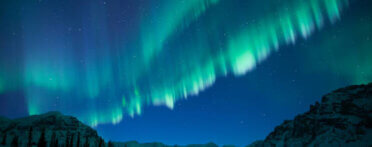Black Bear, Ursus americanus
Today is #MuseumSelfieDay! Our Collections Manager snapped a pic with Shadow, the Science Center’s American black bear, to celebrate. Did you know that black bears live in 40 of the US states? An estimated 100,000 of these omnivores live in Alaska where Shadow called home. Found only in North America, approximately 800,000 black bears live in forests from Canada to Mexico.
Despite their name, not all black bears are black. They can also be red, blue-gray, chocolate, cinnamon, blonde, and very rarely, white. Over the past forty years, biologists in Alaska have noted quite a diversity of coat color among the black bears, and that color variation appears to be regional. For example, black bears with a reddish-brown coat color called cinnamon are fairly common in the interior and some southern areas, but rare to find on the southeastern islands of the Alexander Archipelago. However, the bluish-gray black bears called glacier bears are only found in southeast Alaska. Chocolate colored black bears are the most prominent and found all over the forested areas of the state. Blonde and red colored are not as common and have been documented in southcentral and southeastern Alaska.
All the colors of black bear can be found in Alaska, except one – the Kermode white bear. Sometimes called the spirit bear or ghost bear, the Kermode has a rare recessive gene that causes their coat color. These bears are only found in the Great Bear Rainforest of British Columbia, the world’s largest intact temperate rainforest. Unfortunately, biologists estimate that only between 400 and 1200 Kermode bears exist, which raises concerns for the preservation of this rare subspecies of black bear.

See more Artifacts of the Week
About the Science Center Collection
Though many science centers do not have collections, our beginnings as the Academy of Science of St. Louis in 1856 and the formation of the Museum of Science and Natural History in 1959 allowed for the acquisition of a wide variety of artifacts. In 1985, the Museum of Science and Natural History merged with the city’s Planetarium to become the Saint Louis Science Center. The Science Center preserves and cares for its collections for the enjoyment and enlightenment of our visitors, now and in the future.
For more than 160 years, individual collectors have shaped the Science Center’s Collections, building them to over 100,000 artifacts and specimens. Some of these individuals spent years amassing objects based on their personal interests or field of study. Even though each collector had their own unique passion, when taken together, these diverse groupings of objects provide a wealth of scientific knowledge.
Help us choose what’s in the vault!
Connect with curiosity!










